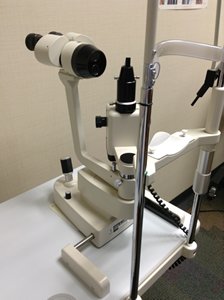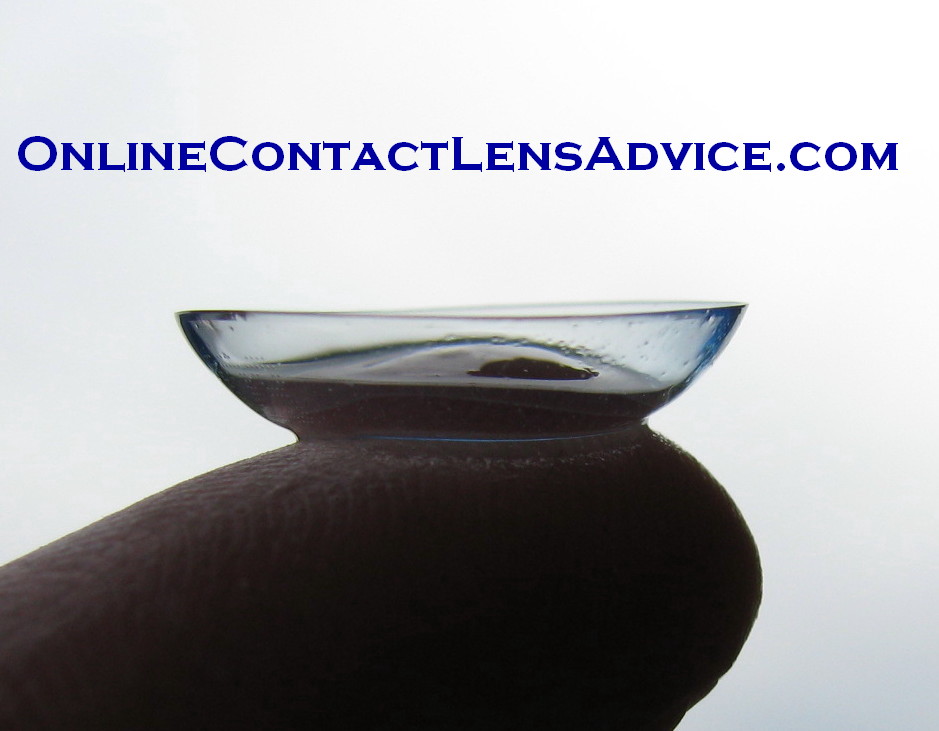- Home
- Ordering Contacts Online
- Contact Lens Fitting
A Contact Lens Fitting is Essential
For New Contact Lens Wearers
Contact lenses must be fitted professionally.
If you have never worn contact lenses before, and want to wear contacts, the internet is definitely NOT the place to try it out. Your friend may tell you that Acuvue Oasys lenses are the most comfortable lenses, and the vision is great, so you want to try them. Why not try ordering them online? There is a reason that you can't just walk into an optical store and pick up a box of contact lenses to "try". Actually, several reasons:
- There are different base curves. Your eye shape may be different than your friend who recommended the lenses.
- What strength of lens would you get? The prescription you get from your eye doctor is for eyeglasses, and contact lenses may or may not be different. That is the reason many eyeglass prescriptions say on them, "Not to be used for contact lenses".
- You may have a sensitivity to silicone. Acuvue Oasys, and many other lenses, have silicone in them. Silicone allows the contact lens to breath better, and allows your eye to stay more moist. However, there is a small percentage of people who have a sensitivity to silicone, and cannot wear these kind of lenses.
Do you know how often to change your contact lenses? Do you know how to insert them into your eye? Do you know how to remove them from your eyes? Do you know how to clean and disinfect your contact lenses? Do you know what to do if you have a problem? These are all questions that your ECP will address and answer for you. Your friend may have answers too, but he/she may not have the correct answers, and unknowingly give you the wrong information.
What is involved in a contact lens fitting?

If you want to try contact lenses, the first thing you must do is have an eye examination. Get your vision checked, and have the health of your eyes assessed. Let your optometrist know that you are considering contact lenses, so he or she can give you some advice.
Most optometrists and ophthalmologists don't fit contact lenses anymore. They will either give you an eyeglass prescription to take elsewhere to be fitted, or they will introduce you to a technician to train you on contact lens wear. In BC, optometrist offices can have people working under their license who have not specifically trained to fit contact lenses. In these cases, the optometrist will determine which lenses the patient should wear, and the technician does the training. If you see a licensed contact lens fitter in BC, they have been specifically trained to fit, assess, troubleshoot and train people to insert, remove, and care for their lenses. It is your decision where to get your contact lenses fitted. In BC, and the rest of Canada, in order to dispense contact lenses, an individual must be licensed to do so.
You will most likely have to make an appointment to have contact lenses fitted. It is quite time intensive the first time, and typically takes an hour or so.
Steps involved:
- Health assessment of the eye. This is done on a machine called a slit lamp.
- Measurement of the cornea. This is done on a machine called a keratometer.
- You will discuss the health of your eyes, any medications you are taking, the reasons you want to wear contact lenses, and a number of other factors that will determine which brand and replacement schedule for your contact lenses. The ECP will then determine which lenses are best suited for you. (if you are seeing a contact lens technician after you see your optometrist, the doctor would have already done this step)
- The ECP will place the lenses on your eyes.
- You will go for a walk for a few minutes to allow the lenses to settle, and so you can assess how your eyes feel, and the vision you have with contact lenses.
- When you return from your short walk, you will have your vision with contact lenses in checked.
- You will be back on the slit lamp for an assessment of how the lens is fitting, and how your eye is reacting to having the lens in your eye.
- You will be trained on inserting and removing the contact lenses. This may take anywhere from 5 minutes to half an hour or more. Some people have great difficulty inserting lenses; others have a hard time removing them. You may be required to insert and remove the lenses more than once; if you cannot insert or remove them, you may have to return in order to continue with wearing contact lenses.
- Once you are able to insert and remove the lenses, you will be shown how to clean and disinfect your contact lenses.
- You will be required to return after 1-2 weeks (possibly longer) of trying contact lenses for a followup appointment. This will be a shorter appointment where you wear your contact lenses in, preferably having them in your eyes more than 4 hours, so the ECP can check your vision and assess the health of your eyes after wearing them. There will be a review of procedures, and a discussion of any problems you may have encountered.
Fitting contact lenses is part training (education), part experience, and part trial and error. Depending on what you are looking for in a contact lens, your fitting may be simple (simple prescription, basic needs) or it may be more complex and require more than one followup appointment (if you have astigmatism, want multifocal contact lenses, or a combination).
As you can see, there are many steps involved in fitting contact lenses for the first time, and everyone should have this done by a licensed professional!
Search this site:

New! Comments
Have your say about what you just read! Leave me a comment in the box below.